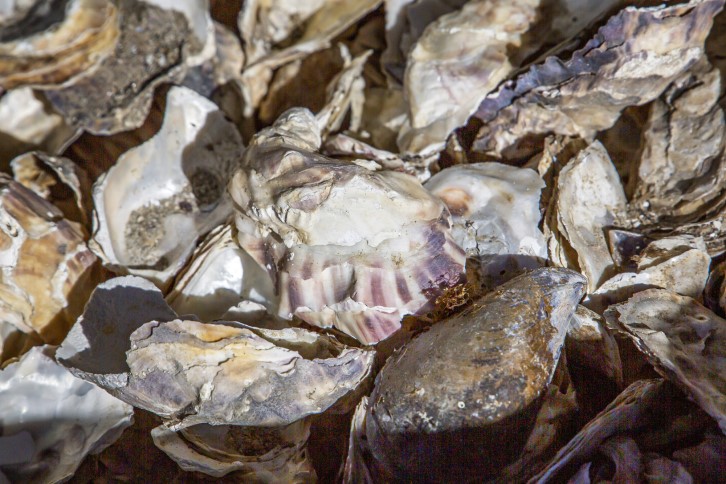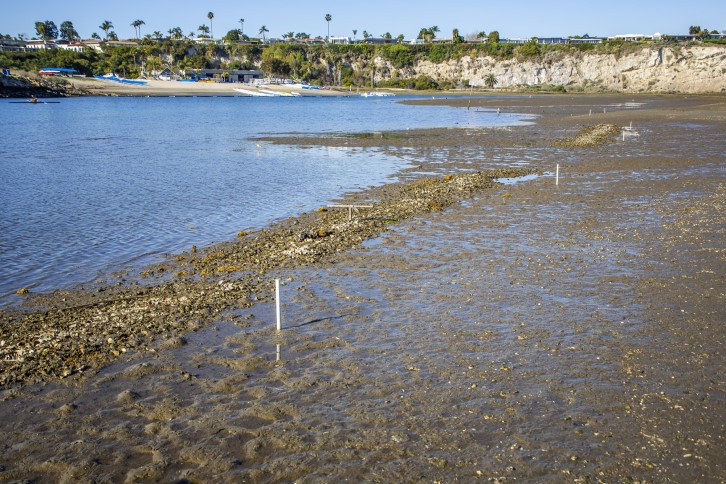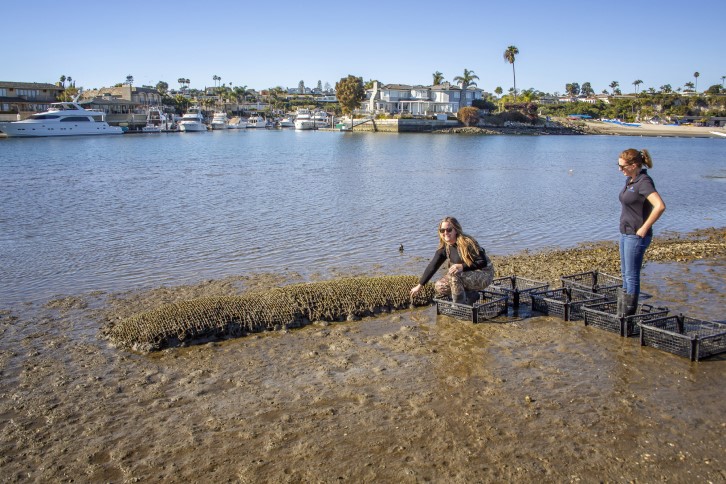-
Published: Aug 23, 2020 | 09:48 AM
IRWD Supports Native Oyster Restoration Program
What could be better than finding a pearl inside an oyster shell?
Keeping the shell, and using it to create new habitat for the native Olympia oyster, now functionally extinct.
That’s what IRWD has been doing in partnership with Orange County Coastkeeper.
The nonprofit organization, whose mission is to protect local waterways and marine ecosystems, has placed some 40,000 pounds of oyster shells in Upper Newport Bay, at Castaways Beach and along the De Anza Peninsula. The craggy surface of the shell serves as the ideal point of attachment for young native oyster larvae looking for a place to fasten themselves and grow.
Irvine Ranch Water District provides space in its corporate yard at the San Joaquin Marsh and Wildlife Sanctuary for the shells to dry. It can take up to a year for the shells to cure so they are clean enough to allow the native species to settle there. The program started in 2017, and to date, over 20,000 native adult oysters are living in the bay, said Katie Nichols, Coastkeeper’s marine restoration director.
“That’s three to 10 times what you’d find naturally occurring,” she said, standing beside rows of coconut coir netting used to hold the shells in place until the oysters can take over and the netting eventually degrades.
Nichols calls it a “living shoreline” project, using natural materials to stabilize the shore so that eventually a full ecosystem — complete with eelgrass and a diversity of fish, mollusks and crustaceans — establishes itself there and thrives.
“Restoration of oysters and eelgrass is critical to the health and resiliency of the Newport Bay ecosystem because both species provide many ecosystem services for our coastal wetlands,” Nichols said.
As filter feeders, oysters also help to improve water clarity, she added.
Coastkeeper is using the shells of Pacific oysters from local restaurants, but the goal is to bring back the native Olympia oysters, which were once an abundant food source for native Californians and an important habitat and refuge for other organisms.
Pollution, over-harvesting and habitat loss have led to the oysters’ decline in the past 100 years. Today, more than 85% of the world’s oyster reefs have been lost.
IRWD Wetlands Scientist Mo Wise, a marine biologist by trade, is encouraged by the progress being made on the project.
“It’s great to see the water we are cleaning through our Natural Treatment System at the San Joaquin Marsh become a part of this renovation,” she said. “But even more rewarding is to see the increase in population counts.
“This is important work being done,” she said, “and IRWD is happy to be a part of it.”

Top photo: IRWD Wetlands Scientist Mo Wise and Coastkeeper Marine Restoration Director Katie Nichols inspect the living shoreline project at Upper Newport Bay; middle photo: a closeup of the shells used in the project; bottom photo: the shoreline after three years, now home to 20,000 adult oysters.





